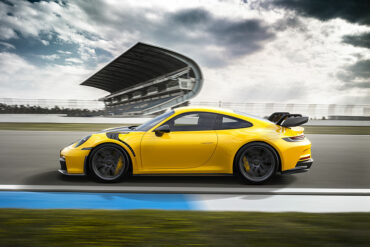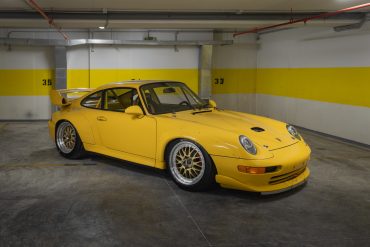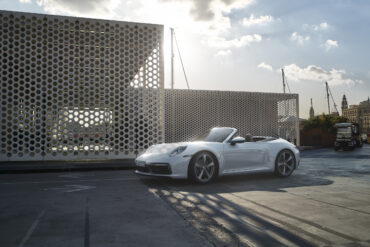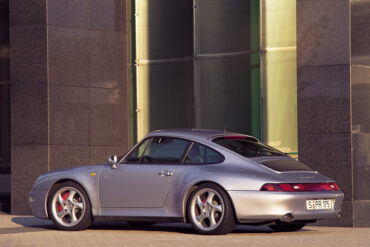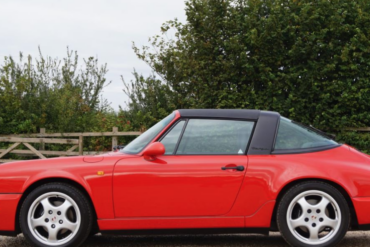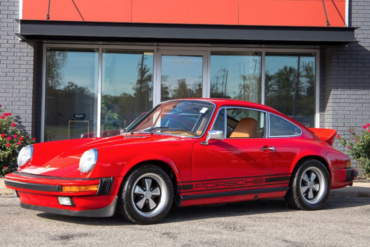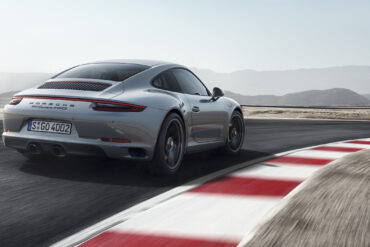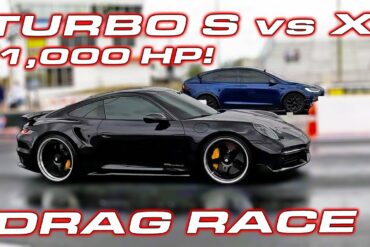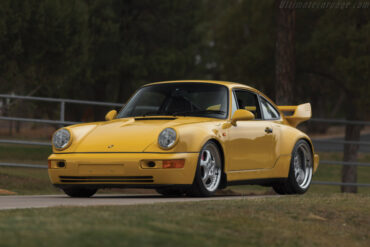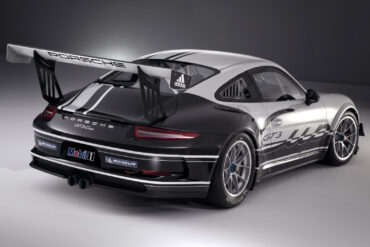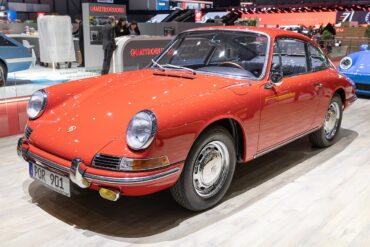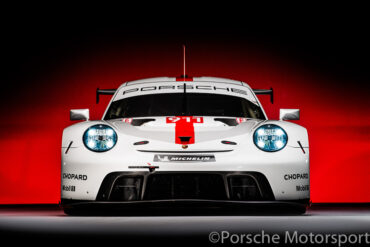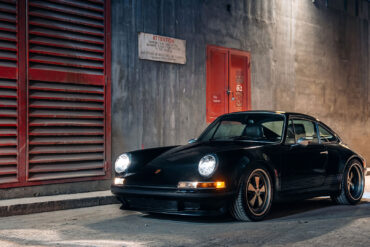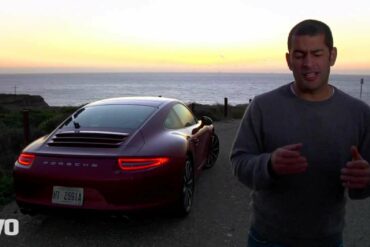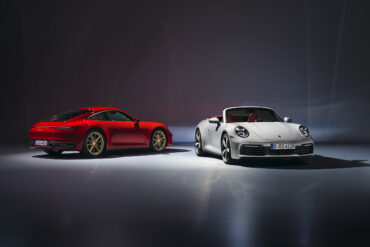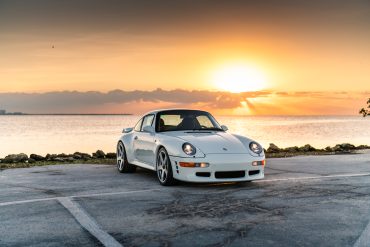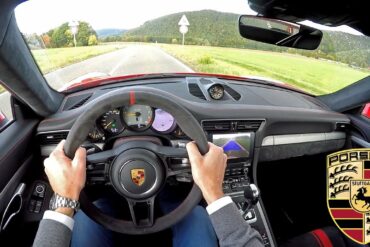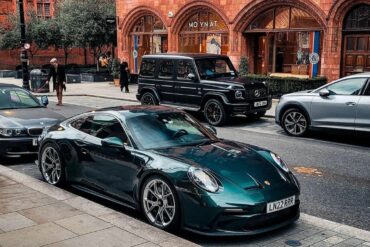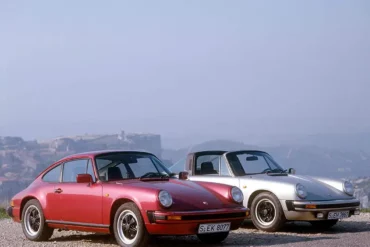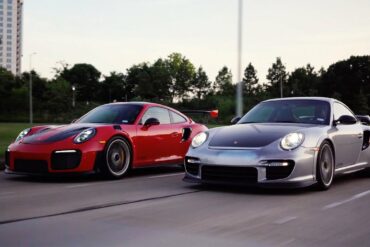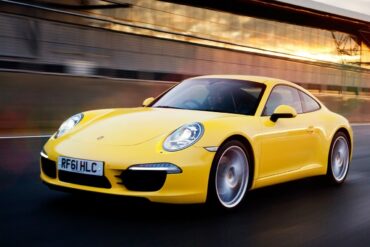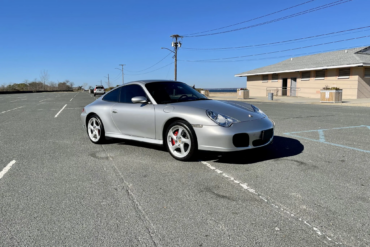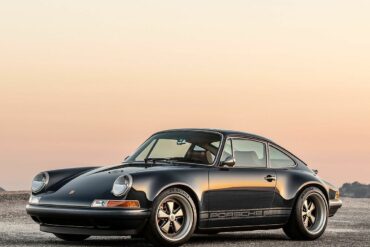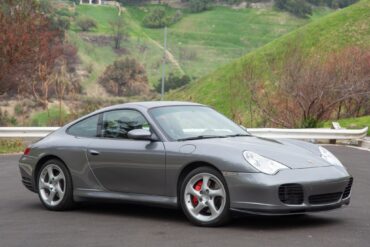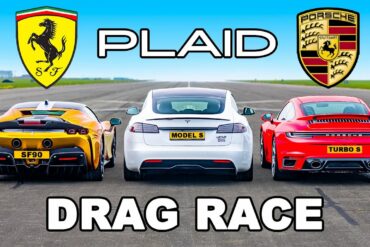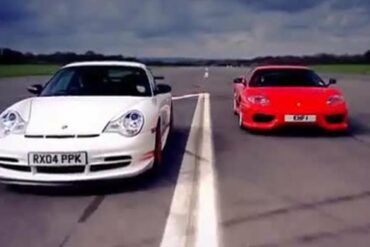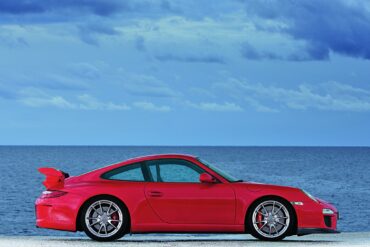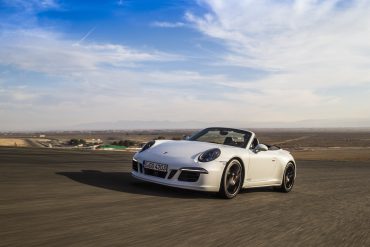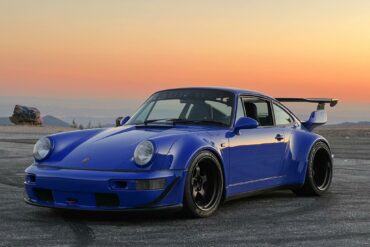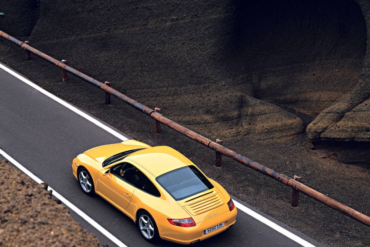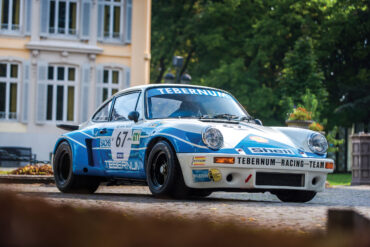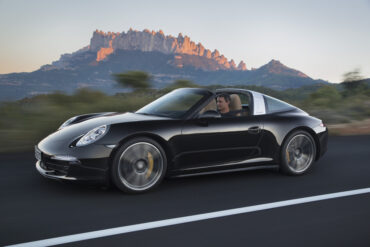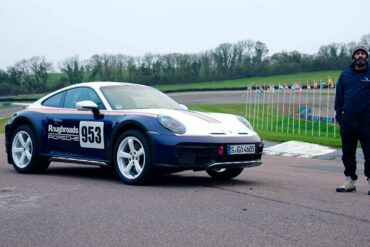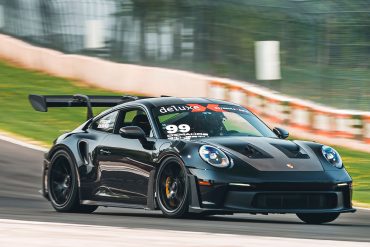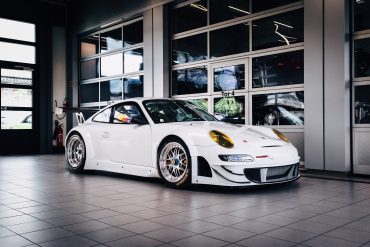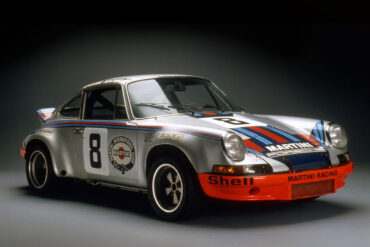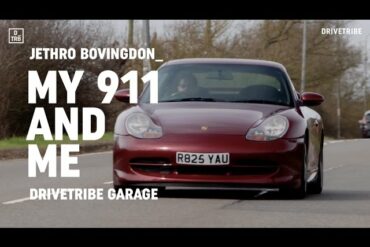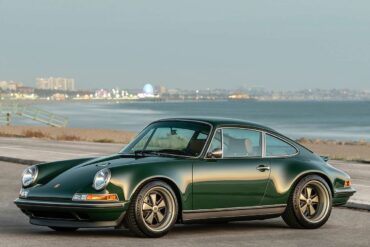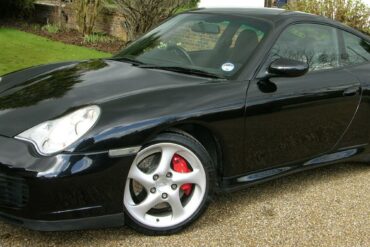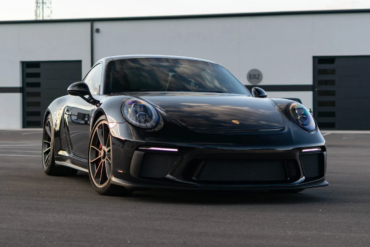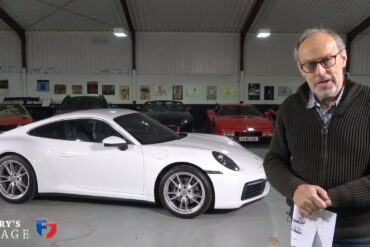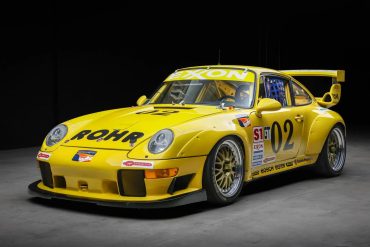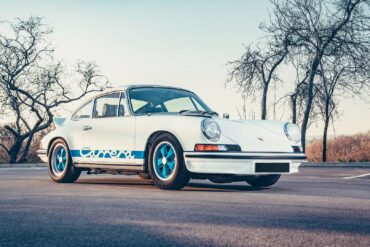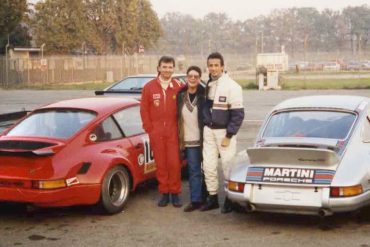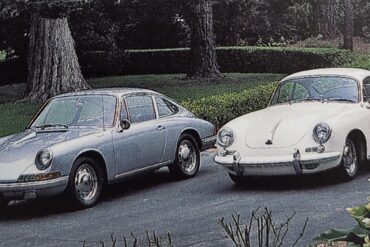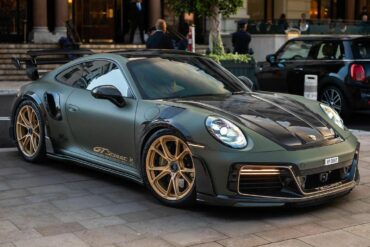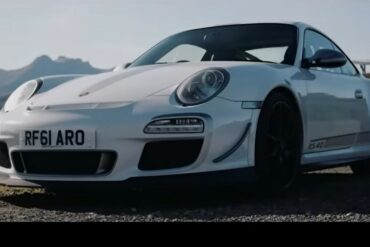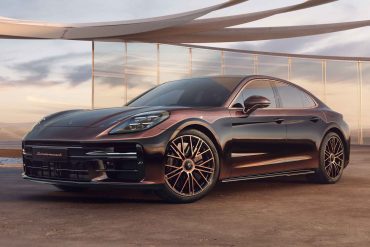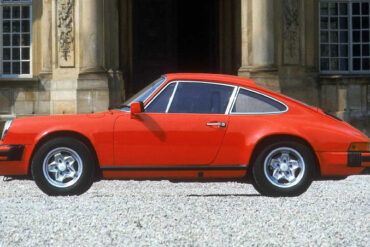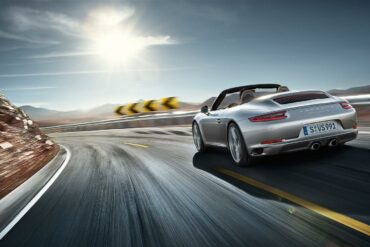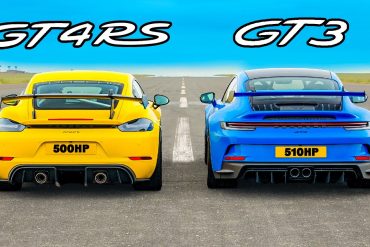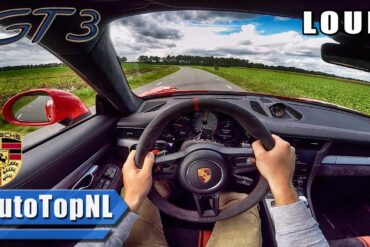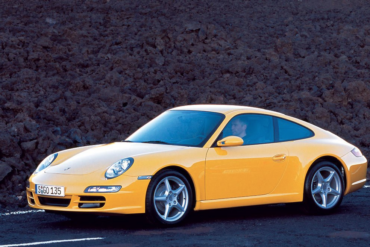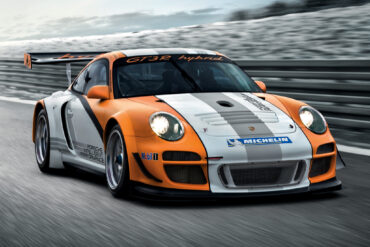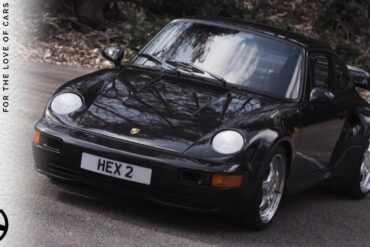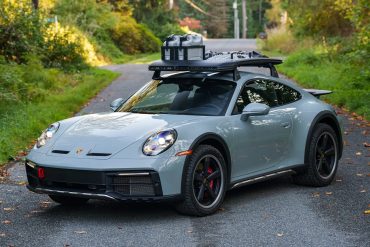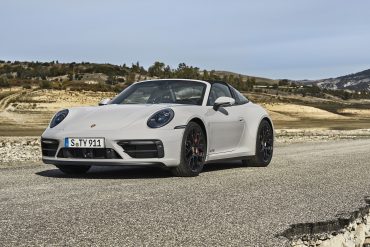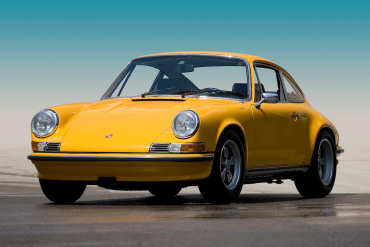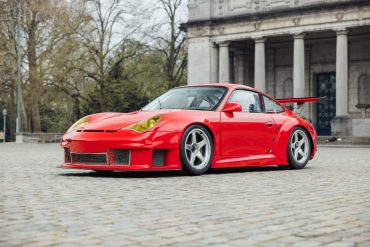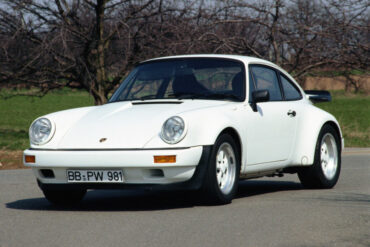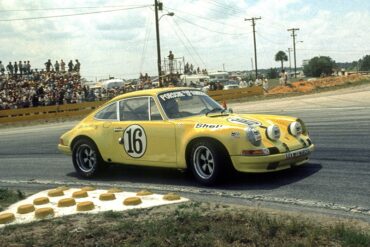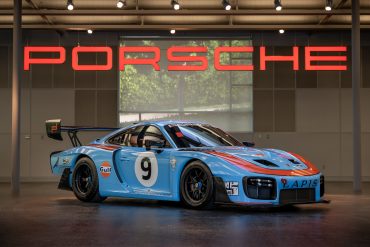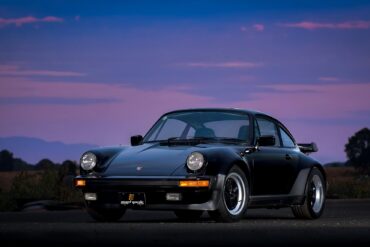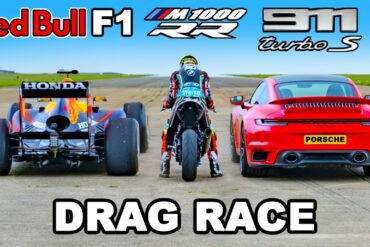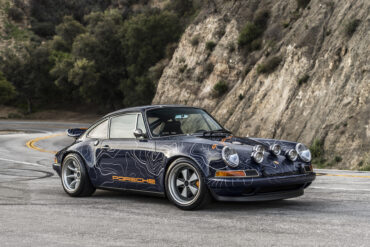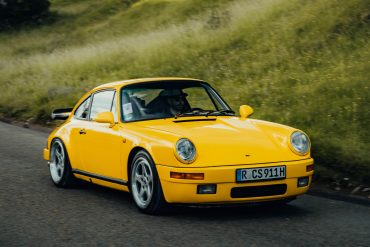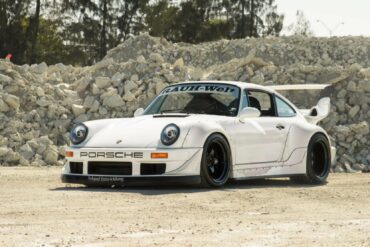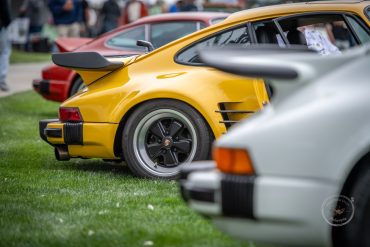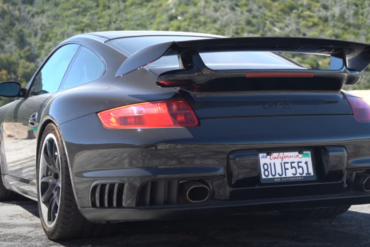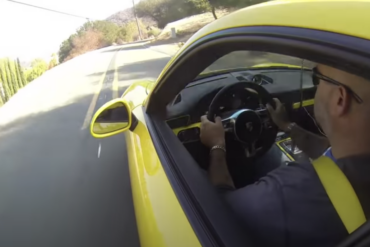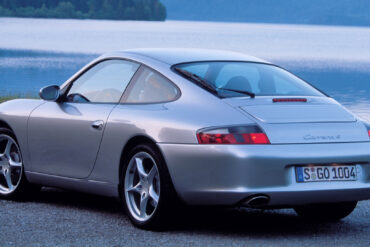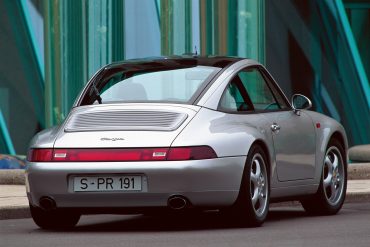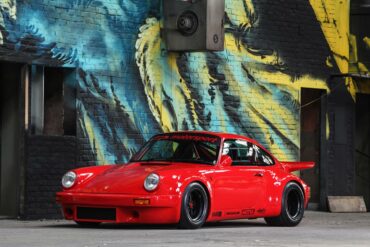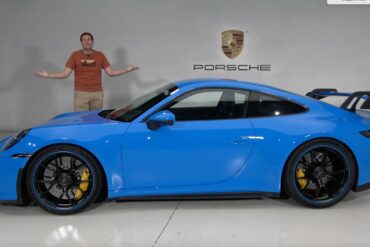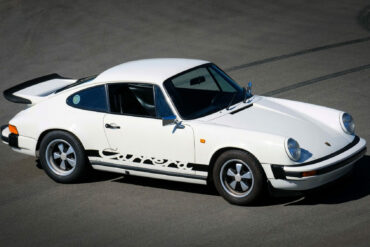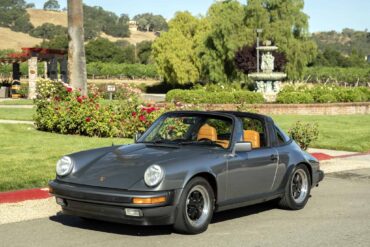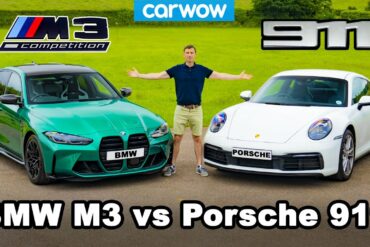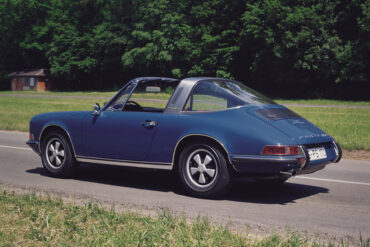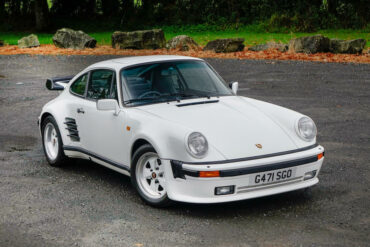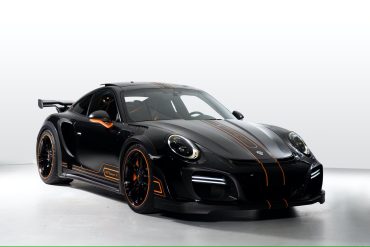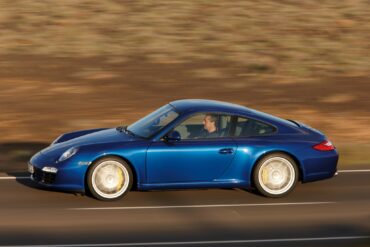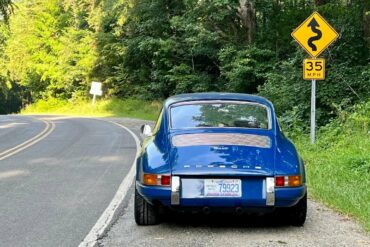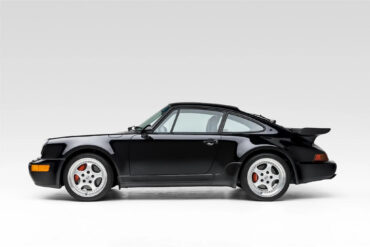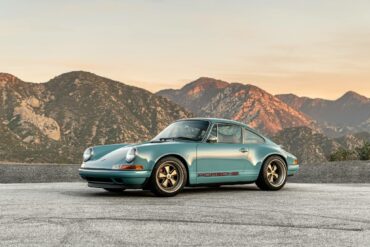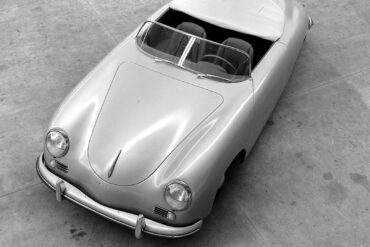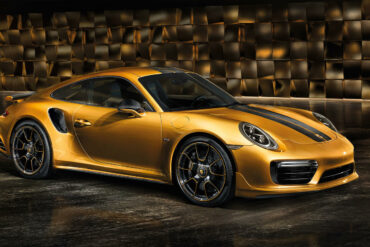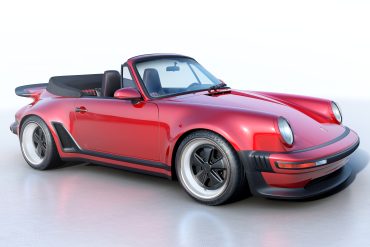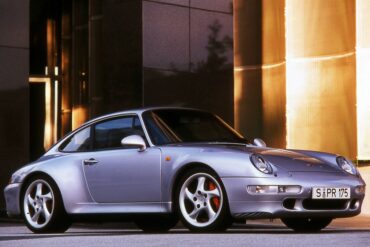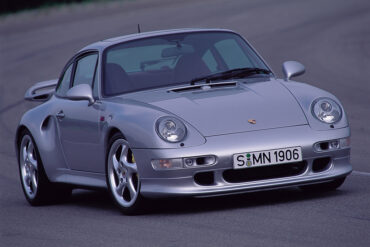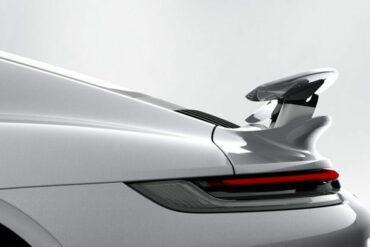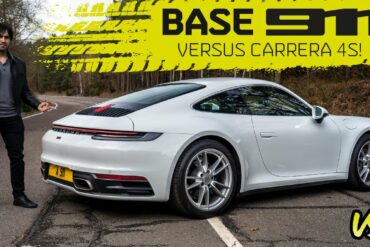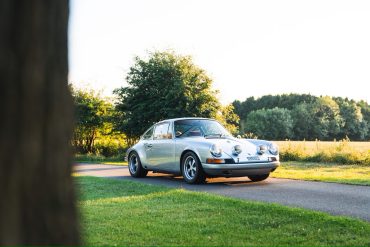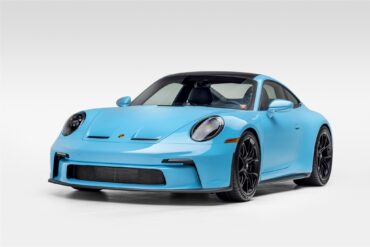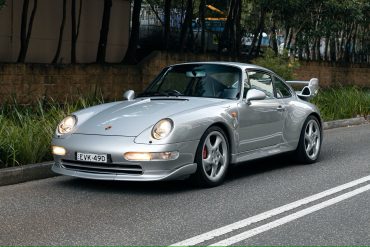Techart is a German tuning company that specializes in modifying Porsche vehicles and this time, they’ve set their eyes on...
Porsche 911
All
- Porsche 912
- 911 Carrera RS 2.7
- Porsche 901 (911)
- Porsche 911 (F-Series)
- Porsche 911 (991)
- Porsche 911 (G-Series)
- Porsche 911 (964)
- Porsche 911 (993)
- Porsche 911 (996)
- Porsche 911 (997)
- 911 Speedster Concept
- Porsche 911 (992)
- 964 Carrera 2
- 964 Carrera 4
- ’30 Jahre’ Anniversary
- 964 Speedster
- 964 Turbo
- 964 Carrera RS
- 964 Carrera Cup
- 964 RSR
- 993 Carrera
- 993 Carrera 4
- 911 Edition 50
- 993 Carrera 4S
- 911 2.0 Bertone Roadster
- 993 Carrera S
- 993 Targa
- 992 Sport Classic
- 993 Turbo
- 996 Carrera
- 993 Carrera RS
- 992 America Edition 911
- 996 Carrera 4
- 993 GT2
- 996 Targa
- 993 Carrera Cup
- 996 Carrera 4S
- 996 Turbo
- 996 Turbo S
- 996 GT3
- 996 GT3 RS
- 996 GT2
- 996 GT3 Cup
- 996 GT3 R
- 996 GT3 RSR
- 997 Carrera
- 996 GT3 RS Race
- 997 Carrera S
- 997 Carrera 4
- 997 Carrera 4S
- 997 Targa
- 911 Carrera 3.0 Coupe (G-Series)
- 997 Targa 4S
- 997 Turbo
- 997 Turbo S
- 997 GT2
- 992 Carrera T
- 997 GT2 RS
- 997 Speedster
- 997 Carrera GTS
- 992 Dakar
- 997 Carrera 4 GTS
- 997 GT3 Cup
- 997 GT3 R
- 997 GT3 RSR
- 997 GT3
- 997 GT3 RS
- 997 GT3 R Hybrid
- 991 Carrera
- 991 Carrera 4
- 991 Carrera S
- 991 Carrera 4S
- 991 Targa 4
- 991 Targa 4S
- 991 Turbo
- 991 Turbo S
- 991 Carrera GTS
- 991 Carrera 4 GTS
- 991 Targa 4 GTS
- 991 911 R
- Porsche 992 GT2 RS
- 991 GT3
- 991 GT3 RS
- 991 GT2 RS
- 991 Speedster
- 991 GT3 R
- 991 GT3 Cup
- 991 RSR
- 991 Carrera T
- 992 Carrera 2
- 992 Carrera 4
- 992 Carrera S
- 992 Carrera 4S
- 992 Targa 4
- 992 RSR
- 992 Targa 4S
- 992 Carrera GTS
- 992 Carrera 4 GTS
- 992 Targa 4 GTS
- 992 Turbo
- 992 GT3 R
- 992 Turbo S
- 992 GT3
- 992 GT3 Touring
- 992 911 S/T
- 911 (G-Series)
- 992 GT3 RS
- 992 GT2 RS
- 992 GT3 Cup
- 911 Carrera 3.0 (G-Series)
- 911 S (G-Series)
- 911 Carrera RSR 2.8
- 911 SC (G-Series)
- Porsche 992 GT3 R Rennsport
- 911 S/T
- 911 Carrera 3.2 (G-Series)
- 911 (Base Model)
- 911 Turbo (930)
- 911 SC Safari
- 911 L
- 911 Carrera RSR Turbo 2.1
- 911 T
- 911 Carrera RSR 3.0
- 911 E
- 911 S
- 911 SC San Remo
- 911 Carrera 3.2 Clubsport
- 911 R
- Porsche 953
- 911 Carrera RS 3.0
- 911 T/R
- 911 Carrera 25th Anniversary
- 911 SC RS
- 911 Turbo LE
- 911 Carrera Commemorative
- 911 Carrera 2.7 (G-Series)
- 911 3.2 Speedster
- 911 Turbo 2.7
- 964 Turbo S
At their upcoming Monaco auction, RM Sotheby’s is thrilled to offer a pristine 1996 Porsche 911 GT2 with just 48...
Features like Porsche’s active suspension and the new-for-992 “wet mode” are standard on the Carrera 4 variants, but the electronically controlled limited slip rear differential (standard on the 4S), as well as ceramic composite brakes (cast iron rotors are standard). The current 911 Carrera 4 Cabriolet is equipped with PASM (Porsche Active Suspension Management). The twin-turbo flat-six has 379 hp and 331 ft lbs of torque.
After introducing the Porsche Carrera S with the body carried-over from the Turbo version, customers asked about an all-wheel-drive version for it. The 993 Carrera 4S was sold between 1995 to 1998. Much like the 993 Carrera S, the 993 Carrera 4S takes the 993 Carrera 4 powertrain and fits it into the widebody 993 Turbo shell, sporting 18" alloy wheels. The engine was the same 3.6-liter naturally aspirated, but it was offered in the higher power output of 285 hp. As with the Carrera 4, it was only available with a 6-speed manual transmission. The 4S did not have a cabriolet version.
1993 Porsche 911 Carrera 4 Targa (964) Technical Specifications Engine Type Flat 6 Induction Normally-aspirated Cooling Air/oil-cooled Valvetrain Single overhead...
Porsche Option Codes – Porsche 911 (1977 Model Year) Looking to decode your 1977 Porsche 911 option codes? Want to...
2019 Porsche 911 Carrera 4 GTS (991.2) Technical Specifications Engine Engine layout Rear Engine Engine type Boxer, twin-turbo Cylinders 6 Valves...
In a video posted on YouTube by the DragTimes channel, we get to see a modified Porsche 992 Turbo S...
The 964 Carrera RS 3.8 was produced as a base for homologation for the venerable 3.8 RSR. It was unveiled in 1993 and produced in a very small series by Porsche’s Racing Department in Weissach-Flacht, and was an extreme evolution of the 964 Carrera RS that was released two years prior. It featured the wide-body look of the Type 964 Turbo, a massive rear spoiler, and three-piece “Speedline for Porsche” wheels with 235/40 and 285/35 tires, making it distinctively more aggressive in appearance than the fairly restrained styling of the Carrera RS of 1992 and capable of providing significantly more mechanical grip.
(2013-2016) Porsche 911 GT3 Cup (991.2) Technical Specifications Type Racing Car Built At Stuttgart, Germany Engine Flat-6 Position Rear, Longitudinal...
1963 – 1964 Porsche 901 Technical Specifications Built At Germany Body Stylist Ferdinand Engine Flat-6 Position Rear, Longitudinal Aspiration Natural...
The new Porsche 911 RSR (2019) What better way to introduce a new race car model, than to do so...
The latest bespoke Porsche 911 (964) commission to come out of Theon Design’s Oxfordshire workshops has been unveiled – the...
Chris Harris Review of the 991 Porsche 911 Chris Harris gets a first look at the new 911 in California....
The most basic version of the Porsche 911 Carrera has now been unveiled. Porsche chose to detune the twin-turbocharged flat-six engine and downgrade some of the chassis components. These cars offer very good performance and driving dynamics for a slightly lower price. While marginally larger and heavier than the 991-generation model it replaced, the 992 is also more advanced. Power climbs by 15 bhp from the 991 Carrera, to 379 bhp @ 6500 rpm, which is more than enough horsepower for the street.
Starting as a modest service station in Pfaffenhausen, Germany, within a mere three decades, RUF quickly evolved into a hub...
Mountain Run in a 991.2 GT3 In this video I take you for a POV test drive behind the wheel...
The Touring makes sense for those who envision their GT3 more as a daily mode of transportation than a track...
The 911 SC effectively replaced the 911 S and was one of Porsche's first models that was meant for the international market. It was sold as a cheaper alternative to the 911 Turbo. The SC used an unblown version the 930 Turbo unit that offered 180 to 200 bhp depending on model year. Options included the rear whale tail, front chin spoiler, Bilstein dampers, 16 inch wheels with Pirelli P7 tires and sports seats. Sometimes dealers lumped these options together to create their own sport package. It was available as a Coupe and Targa from 1978 - 1983, while the Cabriolet version was only available in 1983.
Porsche 997 GT2 RS versus 991 GT2 RS Porsche’s 991 GT2 RS remains the most powerful and fastest 911 ever...
2013 Porsche 911 Carrera S Coupe (991) Technical Specifications Engine Type Flat 6 Induction Normally-aspirated Cooling Water-cooled Valvetrain Four overhead camshafts,...
In 2002, the entire generation of the 996 was facelifted. The Carrera 4S was introduced and got the new engine...
Singer Vehicle Design – Newport Commission Today, we take a closer look at the Singer Vehicle Designs Newport Commission. This...
Porsche Option Codes – Porsche 911 (2002 Model Year) Carrera 3.6/GT3/Turbo/GT2, Coupé/Targa/Cabriolet Looking to decode your 2002 Porsche 911 option...
Carwow has yet another interesting drag race for us. One that includes an electric car, a plug-in hybrid electric car,...
Clarkson Spanks the Porsche 996 GT3 RS vs Ferrari 360 Track days with Jeremy Clarkson and the Porsche GT3 RS...
2011 Porsche 911 GT3 (997.2) Technical Specifications Engine Type Flat 6 Induction Normally-aspirated Cooling Water-cooled Valvetrain Double overhead camshafts Injection Port...
2015 Porsche 911 Carrera 4 GTS Cabriolet (991) Technical Specifications Engine layout Rear Engine Engine type Boxer-6 Cylinders 6 Valves per...
This one-of-a-kind RWB build boasts custom hand-fitted bodywork, including modified bumpers, rocker panels, bolt-on fenders, a GT2-style rear wing, a...
2007 Porsche 911 Carrera (997) Technical Specifications Engine Type Flat 6 Induction Normally-aspirated Cooling Water-cooled Valvetrain Double overhead camshafts Injection...
For the 1974 racing season 911 Carrera RSR 3.0 (246 kW) and RSR Turbo 2.1 (338+ kW) were created - the 3.0L for the customer teams and the 2.1 turbo for Porsche’s own team. The Carrera RSR 3.0 was made in small numbers for racing. The 3.0 RSR would go on to become the most successful Group 4 racing car of its time thanks to its combination of low weight, immense Porsche 917 brakes, impeccable handling, and a 330+hp naturally aspirated flat-6.
The life of Jonkheer Gijsbert “Gijs” van Lennep is by no means short of special moments. In 1971, he won...
This is the open-top model for those who don’t want the full convertible experience – and it’s only available in the wide-hipped four-wheel drive bodyshell. The new Targa is a striking design, echoing the 1965 original with its fixed rollover bar. The Targa 4S, gets you the more powerful 3.8 engine from the Carrera S. It mixes regular Carrera 4S go with a sense of style and everyday usability (those occasional rear seats, the real possibility of 30mpg in everyday driving). Great car.
Porsche made sports car history by launching its first publicly available rally car, the $223,450 911 Dakar. After extensive testing,...
Porsche bests its old record The Porsche 911 GT3 RS has just set a new production car lap record at...
In 2008, Porsche unveiled a new and much improved version of the GT3 RSR. Distinguished from its predecessor by a...
Most Porsche fans know little about this epic wide-bodied 911 based race car. While the iconic 2.7 RS is every fan boys...
Round four at WeatherTech Raceway, Laguna Seca, brought adrenalin levels back up to “red line” for Porsche enthusiasts lucky enough...
Porsche 996.1 v 996.2: Every Detail Revealed DRIVETRIBE’s Editor-at-Large introduces his 150,000-mile, 996-generation Porsche 911…...
Singer Vehicle Design – Triplet Commission Today, we take a closer look at the Triplet commission, one of Singer Vehicle...
Porsche Option Codes – Porsche 911 (2003 Model Year) Looking to decode your 2003 Porsche 911 option codes? Want to...
Porsche never fails to impress us when it comes to creating niches with their introduction of a new edition 911 based GT3,...
Is the base 911 Carrera a better buy than the Carrera S? The new 992 version of the 911 is...
Developed by Porsche to fulfill FIA GT racing homologation requirements, the 993 GT2 was derived from the 993 Turbo. It...
1973 Porsche 911 Carrera RS 2.7 Touring Technical Specifications Built At Stuttgart, Germany Price $ $25,000 Engine 911/83 Flat-6 Position...
My first “real” racing car was a Porsche RS/R, which I bought in the mid-1980s. Previously, I had done quite...
Porsche 911 Turbo S 0 to 60 mph run and review The time has finally come for Mat to review...
The Porsche 911 is without a doubt one of the most iconic cars of the 20th century. First built in...
First Drive in the 992 Carrera 2S The KING of Sports cars!! The motoring icon, the Porsche 911! Let’s explore...
Visitors to the 2024 Goodwood Festival of Speed enjoyed another stellar celebration of motoring and motorsport, with a variety of...
This here is number 21 of 87 Porsche 992 TechArt GT Street R ever made. The TechArt GTstreet R is...
Join Jethro Bovingdon as he drives through beautiful sceneries of Scotland in a Porsche 911 (997) GT3 RS 4.0. ...
The third generation of the Panamera is presented in a unique form. Alongside this completely redeveloped model, Porsche is unveiling...
Porsche 911 (G-Body) Paint Color Options This post outlines all the color options for the original G-Body generation Porsche 911...
2018 Porsche 911 Carrera S Cabriolet (991.2) Technical Specifications Engine Engine layout Rear Engine Engine type Boxer, twin-turbo Cylinders 6 Valves...
Whenever Porsche introduces a GT version of one of their vehicles, you can expect them to be really special. But...
991.2 911 GT3 POV Driving Impressions Porsche 911 GT3 (991.2) POV Test Drive INSANE SOUND!! by AutoTopNL...
2006 Porsche 911 Carrera (997) Technical Specifications Engine Type Flat 6 Induction Normally-aspirated Cooling Water-cooled Valvetrain Double overhead camshafts Injection...
During the Geneva Motor Show in 2010, a Porsche 911 GT3 R with innovative hybrid drive is making its debut,...
Ultra Rare, Ultra Cool Have you ever seen a 911 Flatnose before? Neither had we. Here’s the story of one...
Unveiled at the 2022 Los Angeles Auto Show, the 911 Dakar pays tribute to the Porsche 953’s triumphant victory in...
The 2022 Porsche Targa 4 GTS adds more grunt, packs less weight, has sharper handling, and packages it up in...
The 911 Carrera RS 2.7 stands as a testament to Porsche’s dual-use sports car concept. Born out of necessity for...
Based on the road-going 996 911 GT3 RS, the GT3 RSR features improvements to its predecessor in all key areas. The...
1984 Porsche 911 SC RS (911) Technical Specifications Model 911 SC/RS – Type 954 Year 1984 Engine 6-cylinder, horizontally opposed...
Porsche developed the S/T, of which 33 were built in 1970 and 1971, taking full advantage of new FIA rules allowing a two-inch wider track. Accordingly, wheel arches were widened to accommodate seven-inch front and nine-inch rear wheels. Weight reduction was even more radical, including thinner-gauge steel for the roof and floorpans. Heating ducts, seat slide supports, the glove-box lid, ashtray, sun visors and rear torsion-bar covers were deleted.
A great success In this year’s J.D. Power “Initial Quality Study” (IQS), Porsche has earned first in the overall ranking...
Porsche adeptly blends its vintage and contemporary vehicles to attract substantial investments from its affluent clientele. The 935, launched in...
The turbocharged 930 was produced from early 1975 was Porsche’s flagship 911 and arguably the most capable supercar of its...
Affordable Supercars Drag Race HERE.WE.GO! Formula 1 Car vs BMW M 1000 RR vs Porsche 911 Turbo S! That’s right, David...
Singer Vehicle Design – Mulholland Commission Today, we take a closer look at the Singer Vehicle Designs Mulholland Commission. It...
Starting as a humble service station in Pfaffenhausen, Germany, RUF evolved within three decades into a renowned creator of some...
Akira Nakai, the renowned customizer behind RWB (Rauh-Welt Begriff) Porsches, is responsible for creating some of the world’s most iconic...
The 9th annual Werks Reunion Monterey, held by the Porsche Club of America, took place for the second year in...
Is The 997 GT2 Really a $170k Experience? Based on the 997 Turbo, the GT2 was by the far the...
TheSmokingTire Review of the 991 Porsche 911 Carrera S Matt takes a spirited drive through the canyons in the 2014...
Porsche Option Codes – Porsche 911 (2001 Model Year) Looking to decode your 2001 Porsche 911 option codes? Want to...
1997 Porsche 911 Targa (993) Technical Specifications Engine Type Flat 6 Induction Naturally Aspirated Cooling Air/oil-cooled Valvetrain Single overhead camshaft...
For over 43 years, DP Motorsport has been modifying Porsche models for both the racetrack and the road. Their latest...
Doug DeMuro Reviews the new GT3 Porsche 911 992 GT3 Review!!! Today I’m reviewing the new 992 GT3, and I’ll...
1974 – 1976 Porsche 911 Carrera Coupe (MFI) Pictures & Gallery...
1978 – 1983 Porsche 911 SC Targa Technical Specifications Type Series Production Car Built At Stuttgart, Germany Price $ $34,450...
Which Is Better? Do you have around £85,000 on your next car? Then look no further… We’ve brought together the...
1968 – 1969 Porsche 911 T Targa 2.0 (SWB & LWB) Pictures & Gallery...
1989 Porsche 911 Turbo Limited Edition (911) Technical Specifications Engine Flat 6 Position Rear Longitudinal Aspiration Natural Fuel Feed Bosch...
TechArt has transformed this 991.2-generation 911 Turbo S into their high-performance ‘GTStreet R’ specification. The car is coated in a...
2010 Porsche 911 Carrera S Coupe (997.2) Technical Specifications Engine Type Flat 6 Induction Normally-aspirated Cooling Water-cooled Valvetrain Double overhead camshafts...
Driving a classic 911 is pure therapy for some…and I’ve found the earlier cars are just so rewarding. That’s why...
Someone is having a Merry Christmas indeed as Bring A Trailer just closed the auction for a previously featured, No...
Live now on PCarMarket is a one-of-a-kind Porsche 911 Classic Reimagined by Singer dubbed as “Dartmouth Commission”. Featuring a Delicate...
Let’s face it, the Porsche 911 was the most successful model produced by Porsche in the 20th century, and it...
The 500 hundred numbered 911 Turbo S Exclusive Series cars cross the 600 hp mark with their 446 kW engines. The power increase does not make much difference performance wise, but it is good to know you have more than 600 hp. Similar in acceleration and top speed to the ‘regular’ Turbo S, the car reaches 200 km/h (124 mph) in 9.6 seconds (0.3 seconds faster than the regular Turbo S). The car comes standard with the Turbo Aerokit and roof panel made of carbon-fibre reinforced plastic.
California-based luxury specialist Singer just released their first reimagined Porsche 911 (Type 964) Cabriolet. After getting some requests from owners,...
1996 Porsche 911 Carrera 4S (993) Technical Specifications Engine Type Flat 6 Induction Naturally Aspirated Cooling Air/oil-cooled Valvetrain Single overhead...
The 993 Turbo S, available between 1997 and 1998, bumped the power from the standard 993 Turbo up to 450hp (430 for the United States market) with larger turbochargers and a modified engine management system. The Turbo S was fitted with more luxury trim bits on the interior – with more leather and carbon fiber than on the standard Turbo. A larger rear wing was installed as well. Only 345 were built. Its direct successor was the 996 Turbo S for model year 2005.
Autoblog today published an in depth article investigating the new aerodynamic features of the upcoming 2021 Porsche 911 Turbo S. Not...
992 Porsche 911 Carrera Review One thing you’re never short of with 911, is variants. And in 992 we already...
This 1972 Porsche 911 ‘Special’ is a custom creation inspired by the early 1970s S/T model by Tuthill Porsche. Beneath...
Bring A Trailer is currently offering an acclaimed contemporary sports car, boasting a particularly handsome specification. This 2023 Porsche 911...
The Porsche 993 Turbo, introduced during the 993 generation of the 911, revolutionized the sports car landscape. With a 400...


